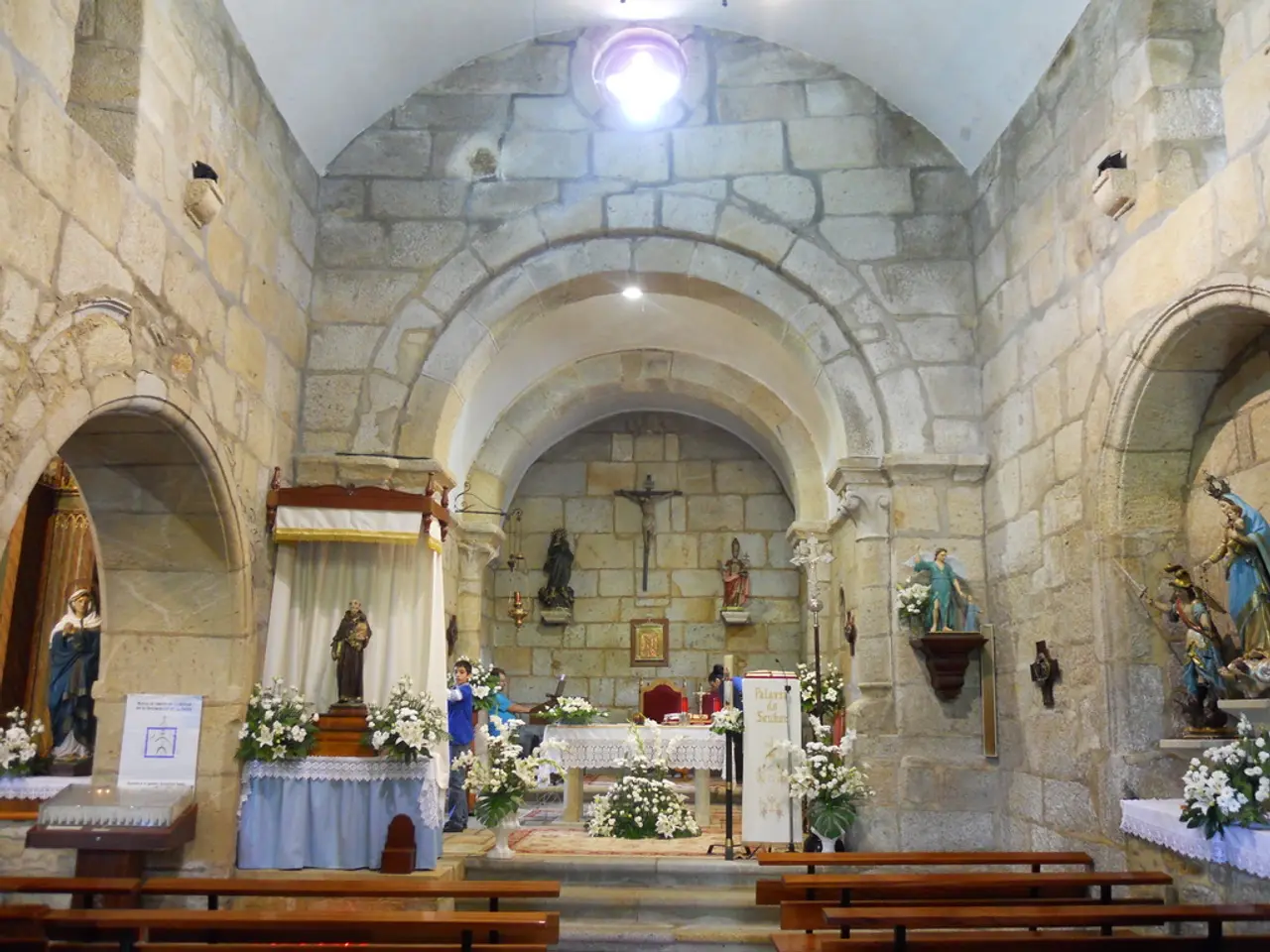Medieval Estonian church's secrets unveiled through research by conservation students
Kirbla Church, Estonia's smallest medieval parish church, is currently the focus of an intriguing study led by students from the Department of Cultural Heritage and Conservation at the Estonian Academy of Arts (EKA).
Located in Lääneranna Municipality, Pärnu County, along the Risti-Virtsu-Kuivastu Highway in Western Estonia, Kirbla Church was once decorated much more lavishly than it appears now, according to Anneli Randla, the department director.
Over the past two decades, the students from EKA have conducted conservation studies on around 20 churches across Estonia. Their efforts on Kirbla Church have uncovered valuable historical layers, including a keystone above the vault bearing a coat of arms, a colored hour-weavingbone pattern on the ribs, and imitation stonework on the triumphal arch.
The columns supporting the organ loft in Kirbla Church were painted with a marble imitation, adding to the church's opulent past. The most interesting finds from the conservation studies will be left visible for everyone to see, while less informative or unworthy areas will be restored to their previous condition.
The church's ceilings and vaults have been examined millimeter by millimeter over the course of a week. Kirbla Church had no prior research done on it, and even art historians have studied it very little. The study of Kirbla Church is part of the students' practical training.
Since then, Kirbla Church has been fitted with an automatic ventilation system, improving the indoor environment. The team has also recovered information about the earlier appearance of Kirbla Church, including details about the organ loft, columns, manor owners' box, and pastor's box in the chancel.
While specific details about the original appearance, furnishings, and lavish decorations of Kirbla Church are not readily available, it is noted that ongoing research is being conducted into its historical and architectural aspects.
Historical archival research on construction records and old images or drawings, physical examination of the building fabric and decorative elements, and analysis of any surviving original furnishings or liturgical objects are typically employed in such studies. For authoritative details on the church’s original appearance and interior elements, it would be best to consult specialized conservation reports or publications by heritage institutions focused on Estonian churches, or contact the Estonian Academy of Arts for outcomes of the students' research.
The department visits all of Estonia's medieval churches as part of their study, and Kirbla Church is just one of the many hidden gems waiting to be uncovered and preserved for future generations.
The ongoing research at Kirbla Church by students from the Estonian Academy of Arts is not only focused on conservation but also serves as part of their education and self-development in the field of cultural heritage and conservation. This online education project aims to uncover valuable historical layers and shed light on the original appearance and lavish decorations of the church, contributing significantly to the field of online education.
As part of their study, the team employs various methods such as historical archival research, physical examination, and analysis of the building fabric and decorative elements, aiming to reveal specific details about the original appearance, furnishings, and decorations of Kirbla Church. Their findings will contribute to both the academic community and the broader public through research publications and the preservation of this historical gem for future generations.




